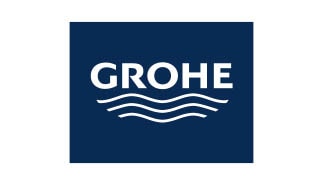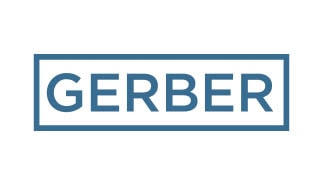Published on
December 7th, 2023What Causes Leaking in Home Radiators and How Can You Recognize the Problem?
Radiators are essential elements of your building’s heating system. Your building’s boiler heats water or steam and sends it through pipes to the radiators, which radiate heat into a room. The heat from radiators is more humid and comfortable because it does not remove moisture from the air like forced air systems do.
Despite their efficiency, though, radiators are slower to react to thermostatic changes and are more prone to damage than other systems. A common issue with older radiators is leaking. Discover the primary causes of a leaking radiator and signs for when it’s time to replace it.
Top 3 Causes of a Leaking Radiator
1. Faulty Radiator Valve
A radiator valve controls the heat generated by the radiator by managing the amount of hot water or steam that enters or exits the appliance. There are several types of radiator valves, including manual, thermostatic, and smart. Most modern radiators use thermostatic valves that self-regulate.
The valve has several components to ensure proper function and watertightness. When any of the parts fail, the radiator may leak.
A faulty radiator valve is the most common cause of leaks. This fault likely stems from a connection point, such as the radiator tail or connection to the heating system, or the securing ring. Unfortunately, if the valve is faulty, the best solution is to replace it.
A radiator valve can start to fail due to regular wear and tear or manufacturer error. Most often, though, the issue stems from poor maintenance or neglect.
Sanitary Plumbing can make quick work of a leaking radiator. Our licensed plumbers assess the system and diagnose the leak source before recommending a solution.
2. Damaged or Loose Radiator Spindle
A radiator spindle connects the radiator to the pipework. It is usually a joint connecting the radiator unit to the radiator valve. The spindle connects with a gland nut, and if the nut is loose, leaks can occur.
To fix this leak, tighten the nut to tighten the spindle. If securing the nut is not enough, you can try wrapping the spindle with PTFE tape.
While these proposed fixes are simple enough, keep in mind that the leak may stem from other issues. It is always best to reach out to Sanitary Plumbing and schedule an inspection of the leaking radiator to determine the definitive cause and offer a more permanent solution.
Depending on the cause of the leak, problems may worsen over time. To avoid moisture damage and ensure tenants and units have adequate heat, it is best to adhere to maintenance and inspection schedules and hire professionals for repairs when problems arise.
Sanitary Plumbing offers annual service contracts. By signing up, you ensure your building and its plumbing systems, including the radiators, receive regular maintenance checks and inspections, reducing the risks of unnoticed and unmitigated leaks.
3. Rust or Corrosion
Steel and aluminum are the primary alloys in radiator construction because they are excellent conductors of heat. However, these metals are vulnerable to water and steam damage. To prevent this, the water in radiator system is treated with chemical inhibitors.
Appropriately high inhibitor levels protect the appliance from corrosion. However, when inhibitor levels are low, internal corrosion can cause small holes to appear at the bottom of the radiator and lead to a leaking radiator.
You typically only see corrosion of this level in older radiators. The holes start small, only permitting a tiny amount of water to drip out. Brown staining on the radiator or the carpet around it is what most people notice before any pooling.
If a radiator develops holes, it is best to replace the unit. Sanitary Plumbing can exchange old radiators for new ones and ensure the system is suitable for modern living.
3 Signs It’s Time To Assess or Replace a Radiator
1. Leaks
While it is possible to patch and repair most leaks, water appearing under and around a radiator is never a good sign for the appliance. A radiator should keep water and steam within the unit; the system should be watertight.
If you have a leaking radiator, contact Sanitary Plumbing to assess the appliance and determine its salvageability. Unless the leak stems from a faulty connection, not the unit itself, it is best to replace, not repair.
2. Running Cold
Sometimes a radiator stops functioning; the unit remains cold despite the heat being on. Many problems, including a broken thermostat, can cause a radiator to run cold.
On average, thermostatic radiator valves can last between 10 and 15 years. It is best to err on the side of caution and assess valves at regular intervals. Radiator and heating system inspections include checking the components for age and performance.
Finally, a cold radiator can stem from air in the system. When too much air builds up in the system, it affects steam or water circulation. The radiator often needs to be bled to resolve the problem.
3. Overheating
Overheating can cause a leaking radiator and worse. Typically, a radiator overheats because of a blocked flow or buildup of material. The blockage creates pressure in the unit, and if the pressure builds enough, the unit can crack, requiring a radiator replacement.
You can minimize the likelihood of having to replace a radiator by contacting Sanitary Plumbing at the first sign of trouble. If you notice a radiator is unusually hot, shut down the system and call for immediate service.
Avoid a Leaking Radiator With an Annual Service Contract
Call Sanitary Plumbing To Learn More
Radiators are critical to the even distribution of heat throughout your property. Unfortunately, they are also susceptible to problems like leaks. You can avoid a leaking radiator and other issues by signing an annual service contract with Sanitary Plumbing, ensuring routine maintenance and necessary inspections occur without fail. Call Sanitary Plumbing at 212-734-5000 to learn more.








